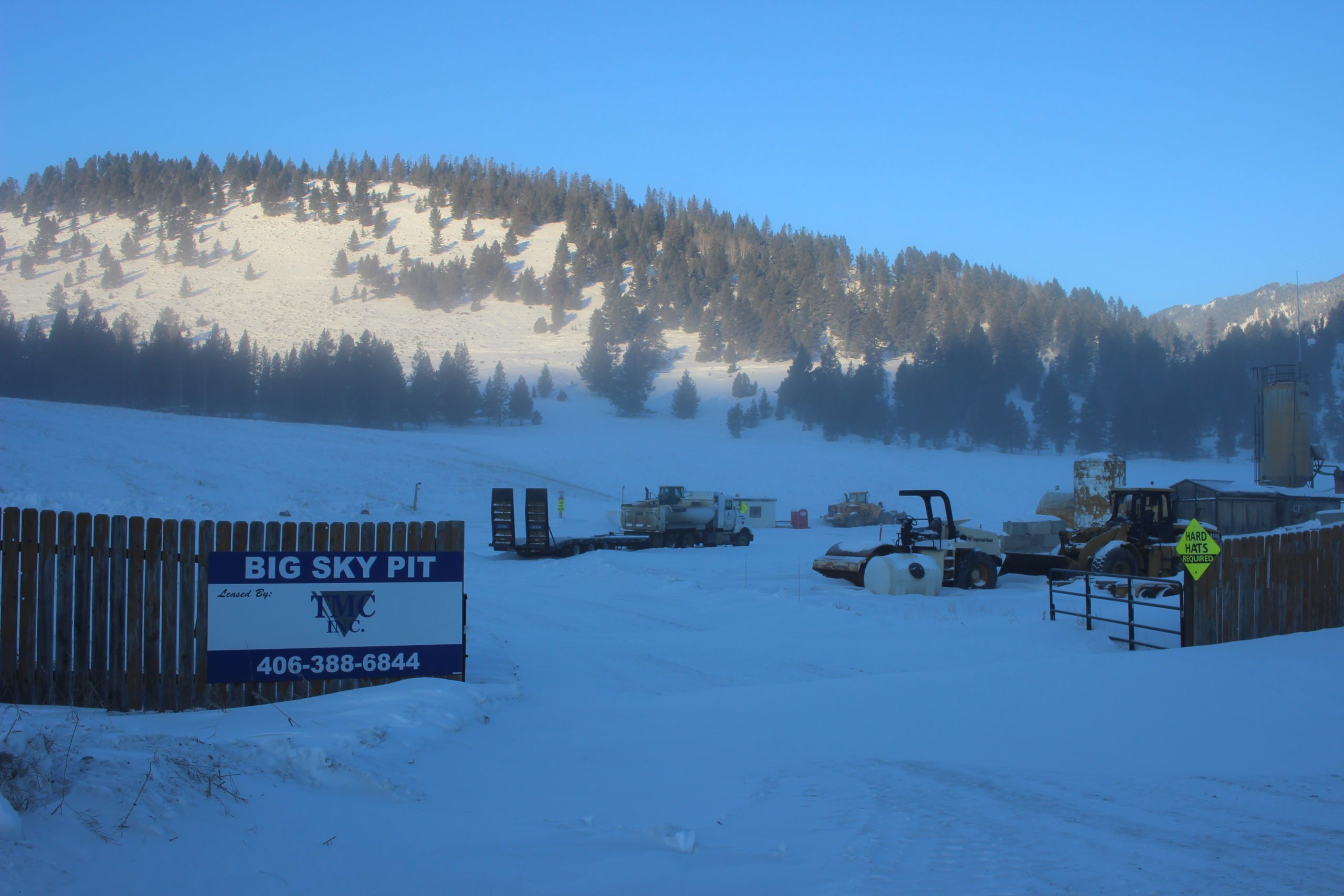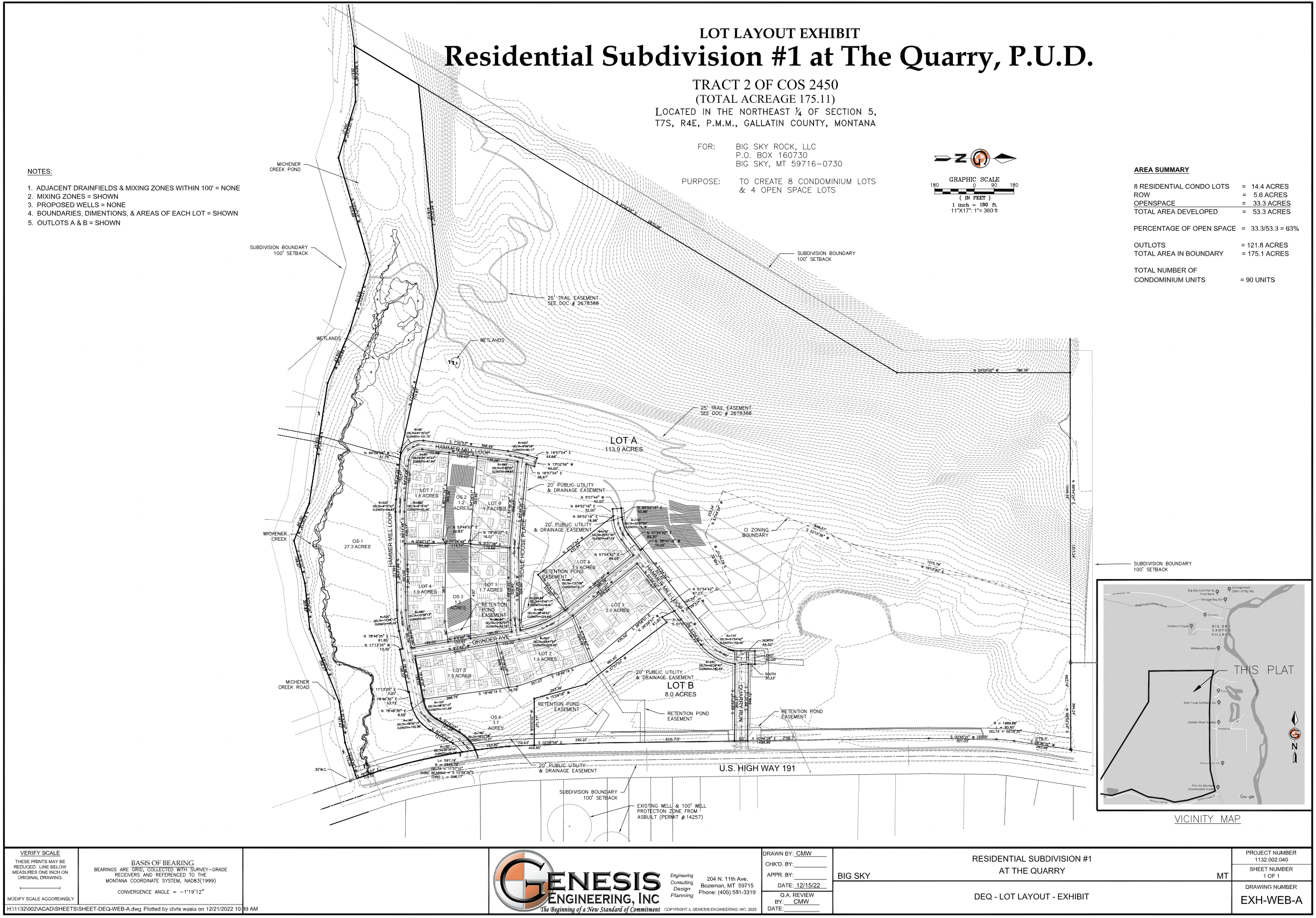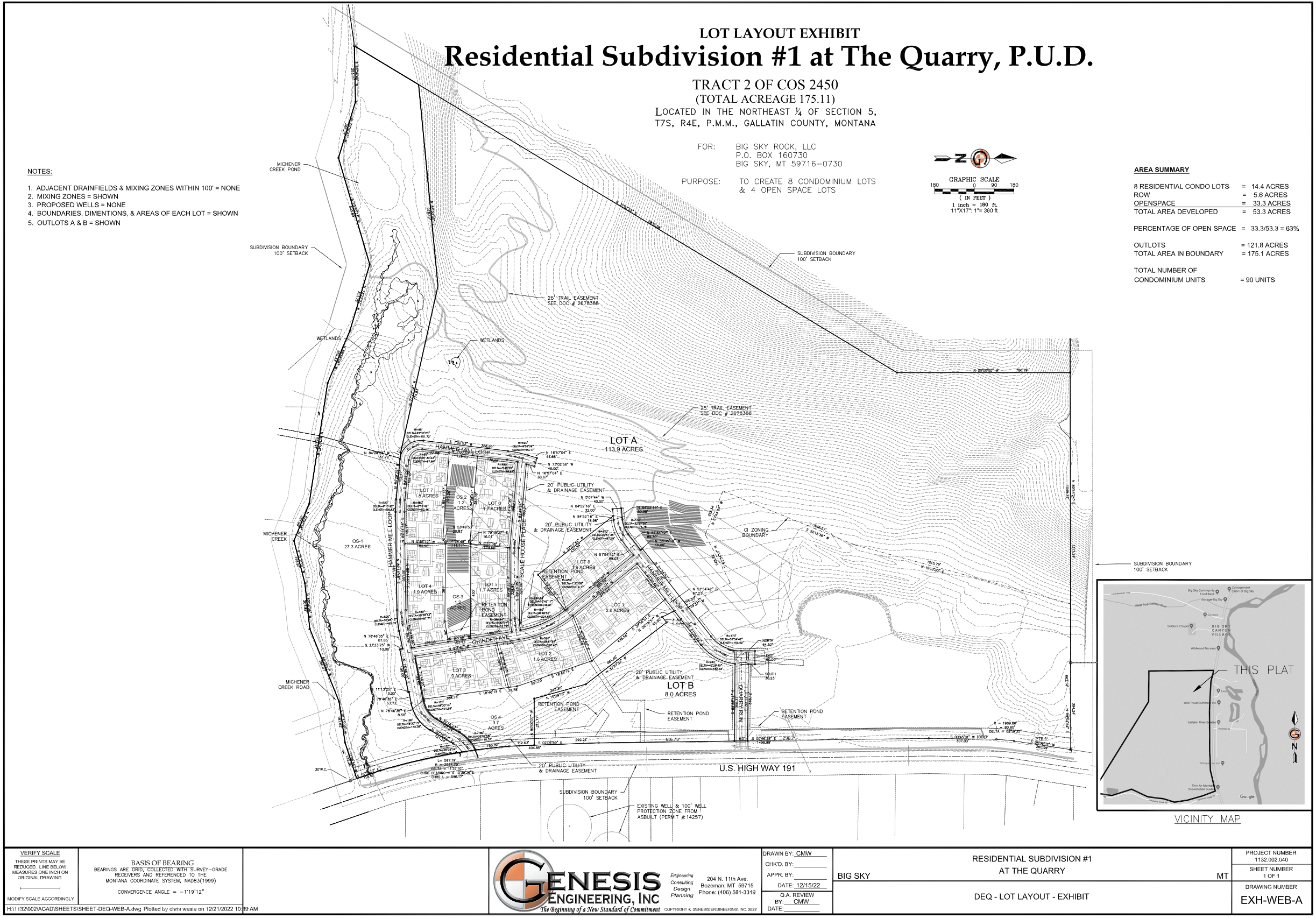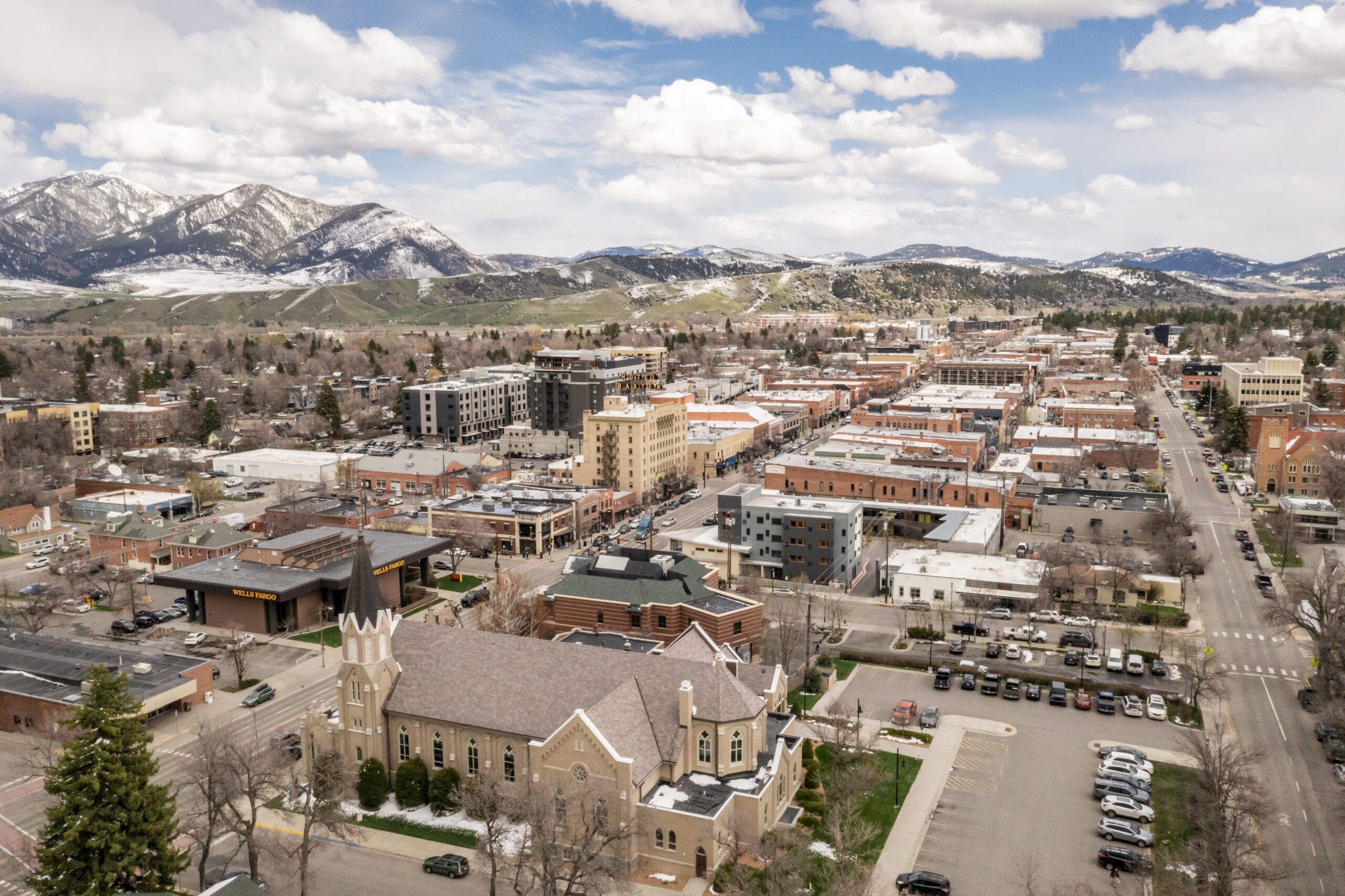Despite activist concerns, developer Scott Altman expressed confidence in the subdivision’s decentralized septic design
By Jack Reaney STAFF WRITER
On Dec. 27, the Montana Department of Environmental Quality will close its 20-day window for public comment on the “Quarry” housing development’s proposed certificate of subdivision approval.
On Dec. 8, the Montana Department of Environmental Quality released a draft environmental assessment for the Quarry project in the Gallatin Canyon. An article by Upper Missouri Waterkeeper Inc.—an activist group focused on protecting waterways in the Upper Missouri River Basin—called the assessment “inadequate” for using loopholes to avoid comprehensive review of its septic system. A recent press release from the Upper Missouri Waterkeeper stated the draft environmental assessment issued by the DEQ “ignores science [and] law” by relying on “another unscientific rule exemption” which assumes that level-II septic system discharge has insignificant impact on surface water as long as it’s processed more than a quarter mile away. The Gallatin River lies about 1,200 feet east of the Quarry Planned Unit Subdivision, according to the release, which is slightly less than a quarter of a mile.
The Upper Missouri Waterkeeper sent an email to the DEQ with hopes of extending the public comment period so it would not overlap with the holidays, but the DEQ deemed that the planned period was appropriate and declined the request.
“The Gianforte administration’s default is to cut corners and ignore the law for developers to the detriment of our clean water, waterways, and fisheries,” Guy Alsentzer, executive director of Upper Missouri Waterkeeper stated in the release. “The (DEQ) and the project’s developers have used every loophole in the book on the Quarry Project to avoid a hard look at water pollution challenges.”

The Quarry PUD was approved in 2019 by the Gallatin County Planning and Zoning Commission, but the proposal awaited environmental review until industrial activity was finished at the Big Sky gravel pit, Alsentzer told EBS. When the gravel pit permit lapsed this fall, the developer submitted the same proposal previously approved by Gallatin County for environmental review by the DEQ, Alsentzer said.
“Generally speaking, it’s good that we’re considering ways to reuse old industrial sites and build housing. We still need to use best available science,” Alsentzer said.
Above and beyond ‘the bare minimum according to state law’
The Quarry project plans to include 135 single family homes and another 130 apartment units, and was designed by Big Sky Rock LLC, a group of four families including local developer Scott Altman. The group saw value in building workforce housing before luxury development happened around the depleted Big Sky gravel pit.
“All of us have sat and watched businesses struggle because they don’t have employees,” Altman said in a phone interview with EBS. “Our mission from day one was not to build 36 big homes—it’s not what Big Sky needs. This parcel [of land] lends itself beautifully to workforce housing.”

Altman expressed respect for Alsentzer and his group’s purpose. Still, he remained adamant that the Quarry project is going beyond the requirements of state environmental laws. Altman believes the Upper Missouri Waterkeeper’s comments do not appropriately represent flaws in the Quarry project, but rather indicate the waterkeeper’s ongoing disagreement with DEQ regulations and processes.
According to Altman, Gallatin County challenged Big Sky Rock during the initial Quarry PUD review in 2019 to create a proposal that would go above and beyond “the bare minimum according to state law.” The county’s challenge followed community concerns regarding nearly 300 proposed sewer hookups directly beside the sensitive Gallatin River.
Altman said Big Sky Rock elected to increase spending on wastewater treatment by a factor of five, implementing a special sewage technology called SepticNET. Designed to address surface water issues in Butte, SepticNET can reduce nitrate output to 3 to 5 parts per million, as opposed to the 40 to 70 parts per million in the Quarry PUD’s original plan, according to Altman. Big Sky Rock also plans to install a monitoring well to ensure DEQ compliance, another safeguard against pollution and not required by law.
SepticNET decentralizes sewage treatment; Altman said that it might take years to build enough of the Quarry’s units to feed a centralized system with enough wastewater to process it effectively. On the contrary, SepticNET hooks up to only about 20 units, reaching full and effective capacity throughout the building process. The entire Quarry PUD is planned to divide into six SepticNET systems.
In addition, Altman says Big Sky Rock took the lead on time-sensitive Resort Tax funding in 2020 to design the Big Sky Canyon Water and Sewer District, which is expected in two to three years to bring most septic systems in Big Sky’s section of the Gallatin Canyon online with the Big Sky’s new wastewater resource recovery facility, expected to finish construction in 2024.
As part of that design, Big Sky Rock plans to place sewer main lines along U.S. Highway 191 from Big Sky as far south as Lone Peak High School. And when that septic district goes live with the town of Big Sky in the next couple years, the Quarry project will immediately discontinue their use of SepticNET (producing level two discharge) and redirect sewage to Big Sky where it can be processed at a higher quality (level three). Big Sky Rock will then remove SepticNET systems from the Quarry PUD and redistribute them to locations further south in the canyon in need of higher quality discharge treatment.
The Gallatin River Task Force, DEQ and Guy Alsentzer have all been involved with the planning, according to Altman.
“We did not do the bare minimum on this [project],” Altman said. “We have tried on every step to go above and beyond what’s required at every step. We have spent more money on better systems and better testing, and to get the canyon sewer district running. Stuff that we voluntarily put together to show we are doing the most we can do.”
Still, the Upper Missouri Waterkeeper stated that the DEQ’s draft environmental assessment is out of line with a Nov. 15 court ruling on the neighboring Lazy J South subdivision which found that the DEQ did not conduct a proper assessment of the subdivision’s wastewater quality.
As for the Upper Missouri Waterkeeper’s concern with the Quarry PUD using “dozens of septic systems to avoid pollution control permitting,” Altman said that Alsentzer sees the design as avoiding the onerous review required of centralized systems.
According to the Upper Missouri Waterkeeper, individual SepticNET systems “[are] designed to avoid triggering common-sense rules that typically require new wastewater treatment and disposal systems to undergo a formal pollution permit process and a stringent water pollution control evaluation.”
Upper Missouri Waterkeeper is encouraging concerned citizens, businesses, and clean water and river supporters to submit a public comment before the Dec. 27 deadline. The public comment is regarding the DEQ’s draft environmental assessment, not the entire Quarry subdivision.














